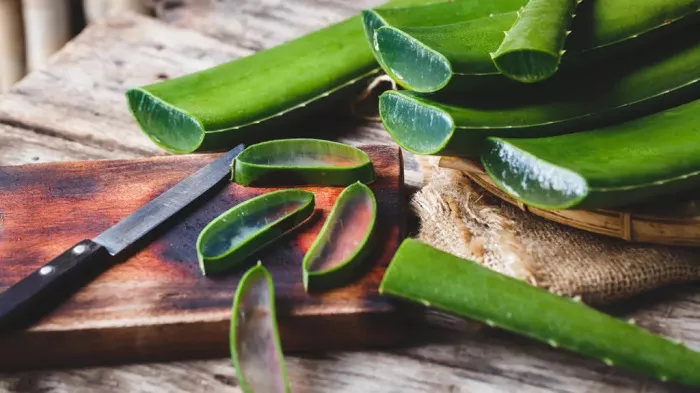Pimple marks can be a persistent concern for many, affecting not only the appearance of the skin but also one’s confidence. Aloe vera, a plant renowned for its healing properties, offers a natural remedy to reduce and eventually remove pimple marks. This article delves into the benefits of aloe vera for skin health, how to use aloe vera for pimple scars effectively, and tips for achieving the best results.
Understanding Pimple Marks
Pimple marks, also known as post-inflammatory hyperpigmentation (PIH), are dark spots that appear after a pimple heals. They result from inflammation during the healing process, which leads to an overproduction of melanin, the pigment responsible for skin color. These marks can vary in color from pink to red, brown, or black, depending on skin tone and the severity of the inflammation.
Causes of Pimple Marks
Several factors contribute to the formation of pimple marks:
Inflammation: The more inflamed a pimple, the more likely it is to leave a mark.
Squeezing or Popping Pimples: This can damage the skin and increase the risk of marks.
Exposure to Sunlight: UV rays can darken pimple marks, making them more noticeable.
Skin Type: Some skin types are more prone to hyperpigmentation.
The Benefits of Aloe Vera for Skin Health
Aloe vera is a succulent plant that has been used for centuries for its medicinal properties. It contains numerous compounds that are beneficial for the skin, including vitamins, minerals, enzymes, and amino acids.
Key Components of Aloe Vera
Vitamins: Aloe vera is rich in vitamins A, C, and E, which are antioxidants that help protect the skin from damage.
Minerals: It contains minerals like zinc, which has anti-inflammatory properties.
Enzymes: Enzymes in aloe vera help exfoliate dead skin cells.
Polysaccharides: These compounds help with skin hydration and repair.
Glycoproteins: They reduce inflammation and promote healing.
Aloe Vera’s Healing Properties
Anti-inflammatory: Aloe vera reduces inflammation, which is key in preventing and treating pimple marks.
Moisturizing: It provides deep hydration, essential for skin repair.
Antioxidant: The antioxidants in aloe vera help to neutralize free radicals that can damage the skin.
Antibacterial: It helps to prevent bacterial infections that can cause pimples.
How Aloe Vera Helps Remove Pimple Marks
Promotes Skin Regeneration
Aloe vera stimulates fibroblasts, which are skin cells responsible for wound healing and collagen production. This accelerates the skin’s natural repair process, reducing the appearance of pimple marks over time.
Reduces Pigmentation
The aloesin compound in aloe vera inhibits the enzyme tyrosinase, which is involved in the production of melanin. By reducing melanin production, aloe vera helps to lighten hyperpigmented areas, making pimple marks less visible.
Soothes and Hydrates the Skin
Hydration is crucial for skin healing. Aloe vera’s high water content ensures that the skin remains well-hydrated, promoting a smoother and more even skin tone. Its soothing properties also reduce redness and irritation associated with pimple marks.
Methods to Use Aloe Vera for Pimple Marks
There are various ways to incorporate aloe vera into your skincare routine to effectively treat pimple marks. Here are some of the most effective methods:
Pure Aloe Vera Gel
Using pure aloe vera gel is one of the most straightforward and effective ways to treat pimple marks.
How to Use:
- Cut a fresh aloe vera leaf and extract the gel.
- Apply the gel directly to the pimple marks.
- Leave it on for 20-30 minutes, then rinse with lukewarm water.
- Repeat twice daily for best results.
Aloe Vera and Lemon Juice
Lemon juice contains vitamin C, which is known for its skin-brightening properties. Combining it with aloe vera can enhance the mark-lightening effects.
See Also: Can Old Scars Reopen?
How to Use:
- Mix 1 tablespoon of aloe vera gel with a few drops of lemon juice.
- Apply the mixture to the affected areas.
- Leave it on for 15-20 minutes, then rinse off with water.
- Use this treatment 2-3 times a week.
- Note: Avoid direct sunlight after application due to lemon juice’s photosensitivity.
Aloe Vera and Honey
Honey is a natural humectant with antibacterial properties, making it a great addition to aloe vera for treating pimple marks.
How to Use:
- Mix equal parts of aloe vera gel and honey.
- Apply the mixture to the pimple marks.
- Leave it on for 20-30 minutes, then rinse with warm water.
- Repeat daily for optimal results.
Aloe Vera and Turmeric
Turmeric has anti-inflammatory and antioxidant properties, which can help reduce the appearance of pimple marks when combined with aloe vera.
How to Use:
- Mix 1 tablespoon of aloe vera gel with a pinch of turmeric powder.
- Apply the paste to the affected areas.
- Leave it on for 15-20 minutes, then rinse with lukewarm water.
- Use this treatment 2-3 times a week.
Aloe Vera and Vitamin E
Vitamin E is known for its skin-healing and scar-reducing properties. Combining it with aloe vera can enhance the treatment of pimple marks.
How to Use:
- Pierce a vitamin E capsule and mix the oil with 1 tablespoon of aloe vera gel.
- Apply the mixture to the pimple marks.
- Leave it on overnight and rinse off in the morning.
- Repeat nightly for best results.
Tips for Best Results
To maximize the effectiveness of aloe vera in treating pimple marks, consider the following tips:
Consistency is Key
Regular application is crucial for seeing results. Make aloe vera a part of your daily skincare routine to achieve the best outcomes.
Protect Your Skin from the Sun
Sun exposure can darken pimple marks. Use sunscreen daily to protect your skin and prevent further pigmentation.
Maintain a Healthy Diet
A balanced diet rich in vitamins and antioxidants can support skin health and aid in the healing process. Include foods high in vitamins A, C, and E, such as fruits, vegetables, and nuts.
Stay Hydrated
Drinking plenty of water helps keep your skin hydrated and supports overall skin health. Aim for at least 8 glasses of water a day.
Avoid Picking or Squeezing Pimples
This can worsen inflammation and increase the likelihood of scarring and pimple marks. Allow pimples to heal naturally.
Perform a Patch Test
Before using aloe vera or any other natural remedy, perform a patch test to ensure you do not have an allergic reaction. Apply a small amount to your inner wrist and wait 24 hours to see if any irritation occurs.
Additional Natural Remedies for Pimple Marks
While aloe vera is highly effective, other natural remedies can also complement its effects:
Apple Cider Vinegar
Apple cider vinegar has astringent properties that can help lighten pimple marks. Dilute it with water and apply it to the affected areas using a cotton ball.
Tea Tree Oil
Tea tree oil has antimicrobial properties that can prevent acne and help reduce pimple marks. Dilute it with a carrier oil and apply it to the skin.
Baking Soda
Baking soda acts as a gentle exfoliant, helping to remove dead skin cells and reduce the appearance of pimple marks. Mix it with water to form a paste and apply it to the skin.
Rosehip Oil
Rosehip oil is rich in essential fatty acids and antioxidants that promote skin regeneration and reduce pigmentation. Apply it to the pimple marks daily.
When to See a Dermatologist
While aloe vera and other natural remedies can be effective for mild to moderate pimple marks, severe cases may require professional treatment. Consider consulting a dermatologist if:
The Marks Persist: If pimple marks do not fade with natural remedies.
Severe Hyperpigmentation: For extensive or deeply pigmented marks.
Scarring: If you develop raised or indented scars.
Skin Irritation: If you experience adverse reactions to natural treatments.
Conclusion
Aloe vera is a powerful natural remedy for reducing and removing pimple marks. Its anti-inflammatory, moisturizing, and skin-regenerating properties make it an effective treatment option. By incorporating aloe vera into your skincare routine and following the tips provided, you can achieve clearer, more even-toned skin. Remember to be consistent, protect your skin from the sun, and maintain a healthy lifestyle for the best results. If pimple marks persist, do not hesitate to seek professional advice from a dermatologist.
[inline_related_posts title=”You Might Be Interested In” title_align=”left” style=”list” number=”6″ align=”none” ids=”10601,10530,10439″ by=”categories” orderby=”rand” order=”DESC” hide_thumb=”no” thumb_right=”no” views=”no” date=”yes” grid_columns=”2″ post_type=”” tax=””]

































